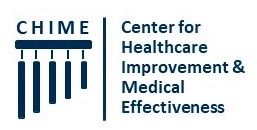Interoperability of healthcare data is essential to a Learning Healthcare System.
Historically, healthcare organizations and individual investigators have assembled a wealth of datasets, coding algorithms, phenotype definitions, and data dictionaries for a myriad of different purposes without any coordination or standardization. This has resulted in huge inefficiencies that impede the translation of evidence-based practices into routine care. Thus, any attempt to combine or compare two or more of these datasets still requires enormous effort. When every healthcare system uses a different name for a data field (such as systolic blood pressure or blood glucose level), evaluating and comparing system-wide performance becomes impossible.
The Observational Medical Outcomes Partnership (OMOP) Common Data Model (CDM) enables the capture of information (e.g., encounters, patients, providers, diagnoses, drugs, measurements and procedures) in the same way across different institutions. The purpose of a CDM is to standardize the format and content of observational data so that standardized applications, tools and methods can be applied across different datasets. Use of a CDM integrates medical records across healthcare organizations so that these data resources can be queried to answer important questions quickly and efficiently.
The OMOP CDM has been adopted by the Observational Health Data Sciences and Informatics (OHDSI) collaborative, a multi-stakeholder, inter-disciplinary effort to bring out the value of observational health data through large-scale analytics. OHDSI maintains an open-source library of analytical tools for research and performance measurement using the OMOP CDM. Standardized structured query language (SQL) queries are shared in a common open-source repository, and detailed data documentation is freely available online.
OMOP Implementations

Data from five University of California medical centers (UC Davis, UC Irvine, UC Los Angeles, UC San Diego and UC San Francisco) and the national Veterans Health Administration (>150 medical centers) have been transformed into the OMOP common data model.

Last Updated: February 4, 2022; Webmaster: [email protected]





